So this time of year in the United Kingdom, many people will be enjoying fireworks displays and bonfires to celebrate Guy Fawkes Night. For those who aren’t familiar with the night, Guy Fawkes tried to blow up the Houses Of Parliament (Westminster Palace) on the 5th November 1605, but he was caught and executed. Thus every year on that date he is burned in effigy (less so nowadays due to health and safety concerns) and a fireworks display usually accompanies.
Well, the 5th of November is still ahead of us, but some friends and I attended a fireworks display with near St Albans Cathedral last night, held during the convenience of the weekend. This is probably one of the largest organised displays in the south of England. Now, Nasim has written about capturing fireworks in the past, and far be it from me to deviate from his excellent teaching. I can only elaborate on how I decided to capture these fireworks myself, and it may provide you with some ideas.
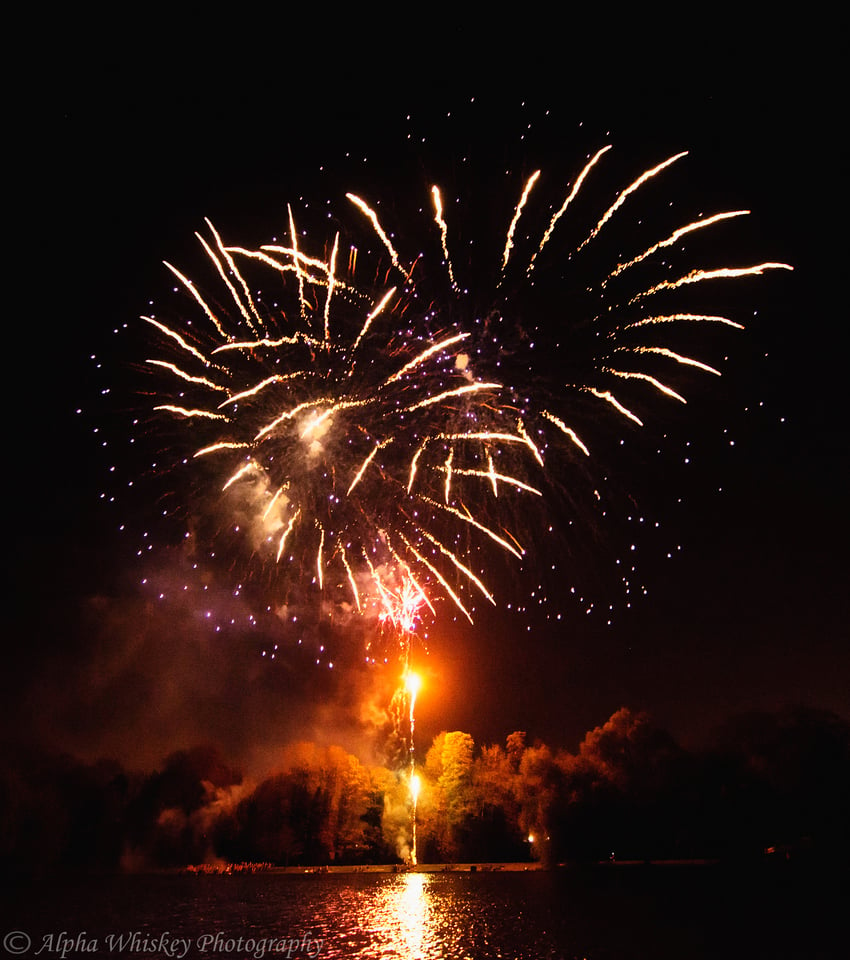
My main aim was not to capture long streaks associated with long exposures, but to get as close as possible to the zenith of each burst. The shutter speed I wanted to shoot at (explained below) negated the use of a tripod so I shot everything hand-held. My friends and I were fortunate to be lakeside for the display, and the fireworks made some colourful reflections in the water.
Now, of course, shooting hand-held in the dark (at the shutter speed I wanted) will require a higher ISO, so I took along my Nikon D600, whose full frame sensor is more capable at higher ISOs than my EM-5. I set the Auto ISO to ‘ON’, with a maximum ISO of 5000. The upper limit of its native ISO range is 6400, but I didn’t feel the need to go that high. The light from the fireworks would often cause the camera to choose a lower ISO. I thus let the camera choose the ISO, and my resulting images ranged between ISOs of 250 to 5000. Naturally, there was noise in many of the images, but as I tend to enjoy my images as a whole I didn’t care that much about it. And in any case I knew the noise could be reduced in post.
I used the Tokina 11-16mm F/2.8 (a DX lens) as a 16mm prime, and the aperture set to F/2.8 in Manual Mode. The shutter speed was set to 1/30 secs. I have found on past occasions that this speed works for me, and so all the images here were captured at that speed.
Being neither privy to the organisation of the display nor clairvoyant, I had to try and time when the bursts would occur and then fire off a few shots. So, yes, there was a little trial and error involved, and I wasn’t always successful.
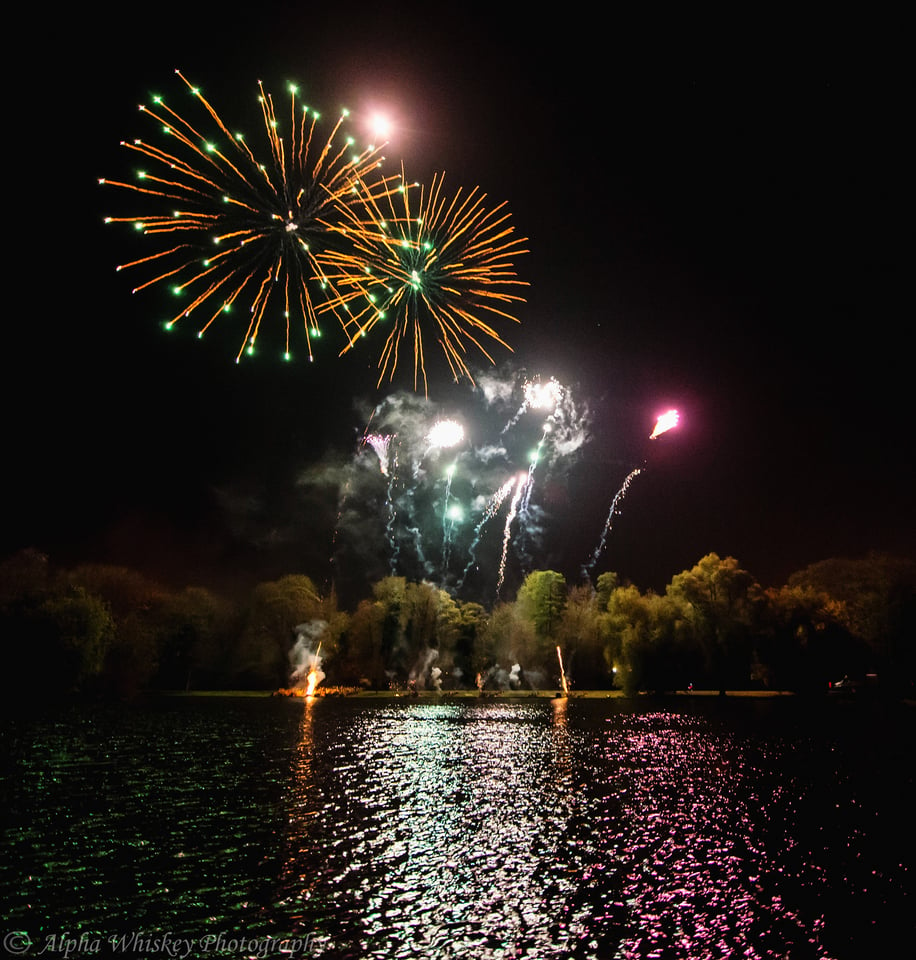
Focusing in changing light (going from very bright to dark between bursts of fireworks) can possibly confuse the camera’s AF, so I established focus on the first few bursts and then kept focus locked in this position using the AE/AL lock button next to the viewfinder. This ensured that every successive shot would be in focus. With a wide-angle lens at the distance I was from the fireworks focus was pretty much at infinity anyway. On a previous occasion, I manually focused on the trees under the fireworks and then shot everything from there, which freed me from having to worry about the AF.
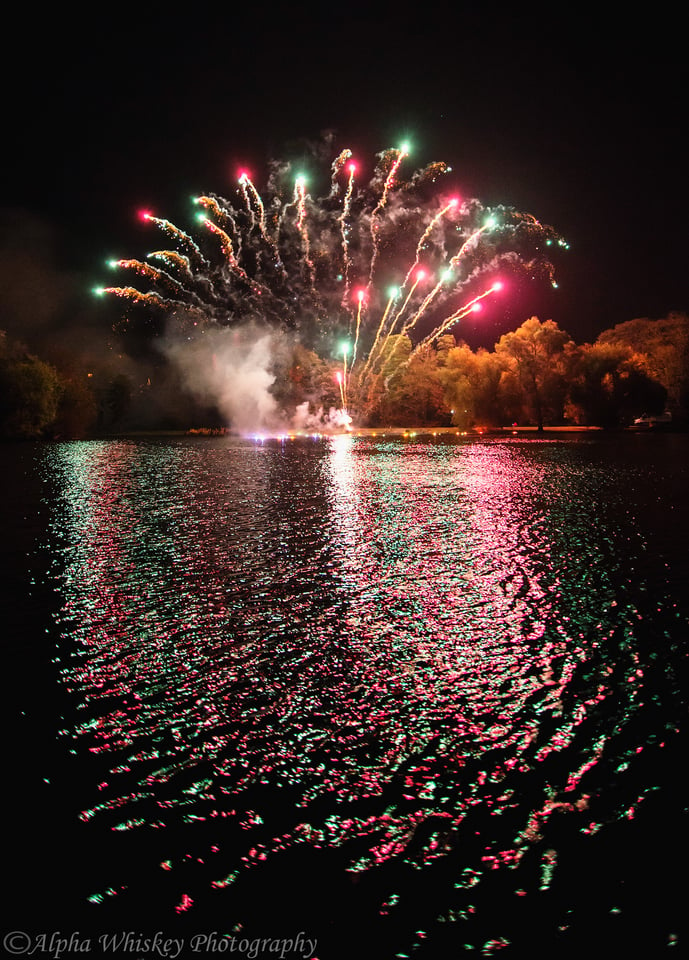
Out of curiosity, I brought along the EM-5 to run off a few shots at the end. This flies in the face of my aspirations to keep things light, but I drove to the event and one extra (and smaller) camera in my bag wasn’t a terrible burden for the hour or so. The Olympus 12-40mm F/2.8 was attached to the EM-5, again with an aperture of F/2.8 and shutter speed of 1/30sec set in Manual Mode. As the m4/3 sensor isn’t as capable in such low light as the larger full frame sensor, I set the maximum ISO to just 1600. (The first image in this article is shot with the EM-5; these images are not in any order.)
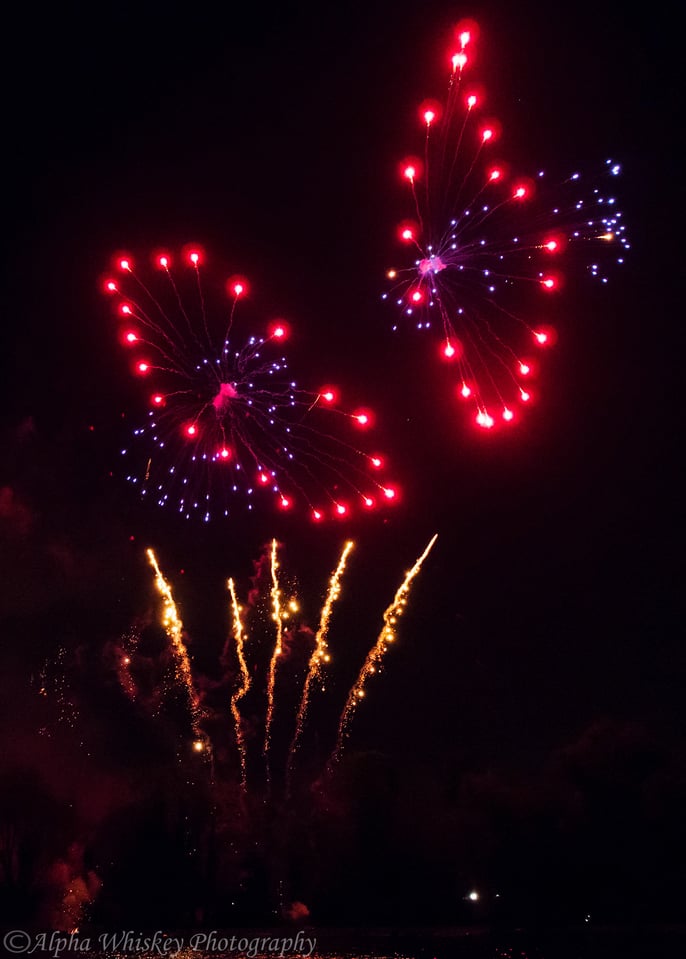
I processed the images in Lightroom, deepening the contrast or blacks to make the fireworks a little punchier. I didn’t really touch the colours since they were already quite vivid. Noise reduction was done with the Luminescence tab only and varied between values of 20 and 50.
Pixel peepers will undoubtedly complain that individual leaves on the trees below aren’t perfectly sharp at the pixel level, but you’ll have to imagine how little I care about that in images of fireworks.
Anyway, while these aren’t the best fireworks images I’ve ever taken, I came away with some pleasing results (they please me anyway!). I hope you will venture out and do even better. Please don’t spend the entire display shooting, however; you should appreciate the spectacle with your own eyes too.
Warm Regards, Sharif.

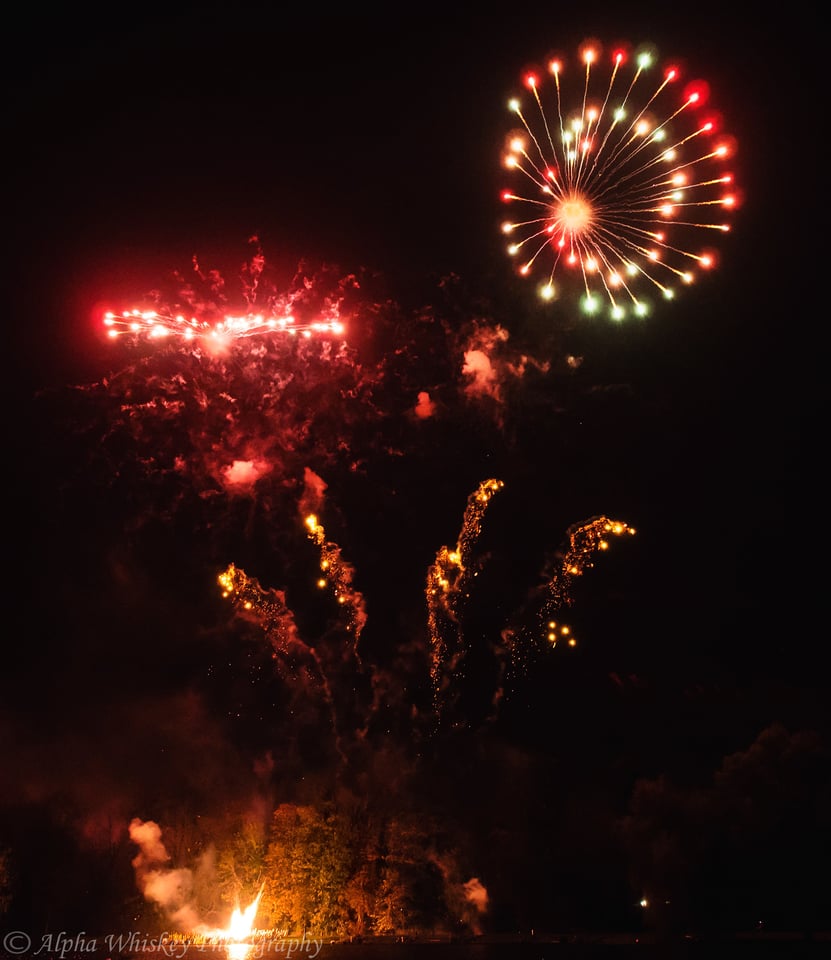
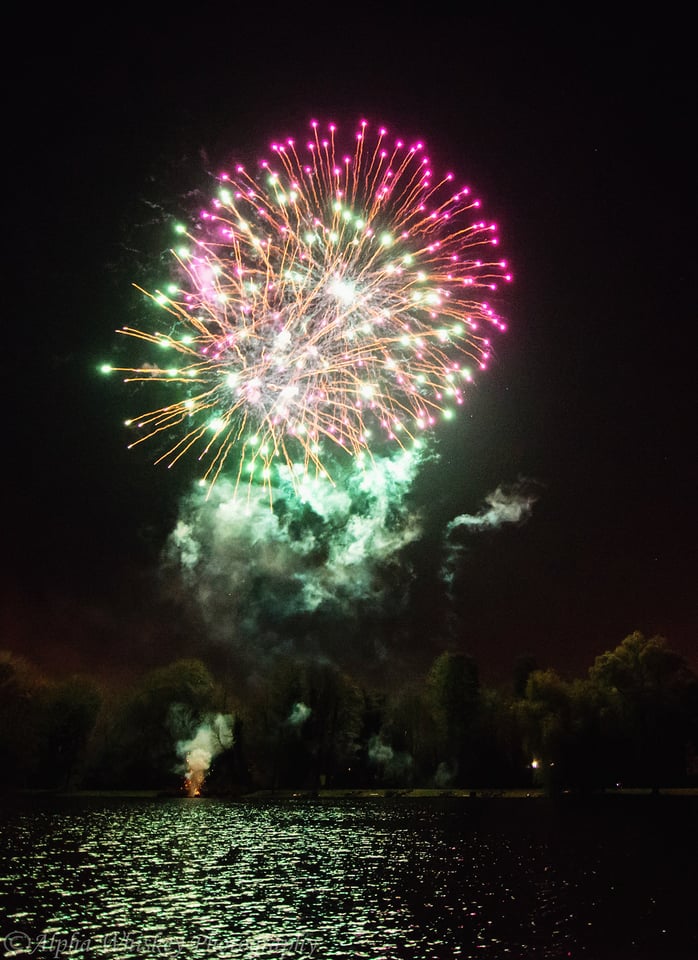
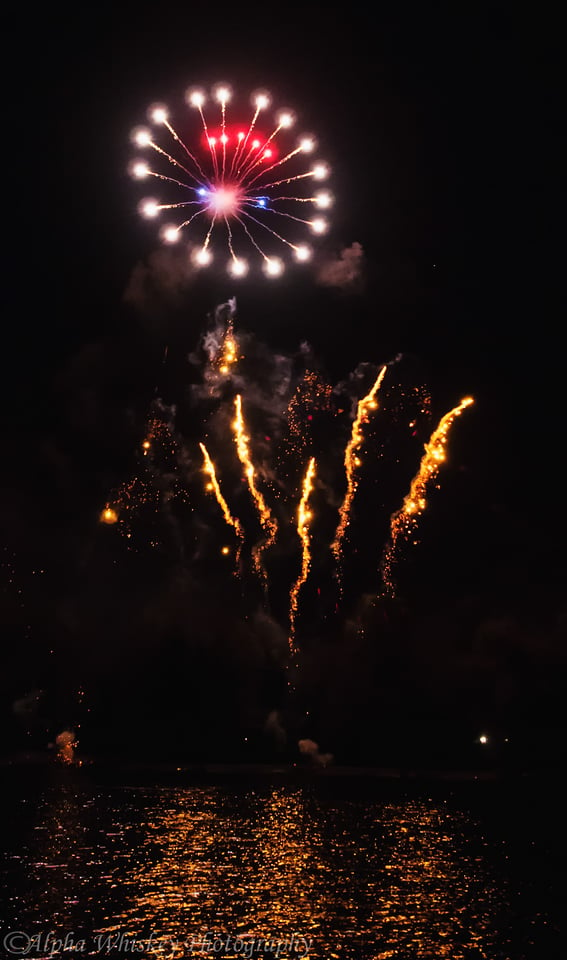
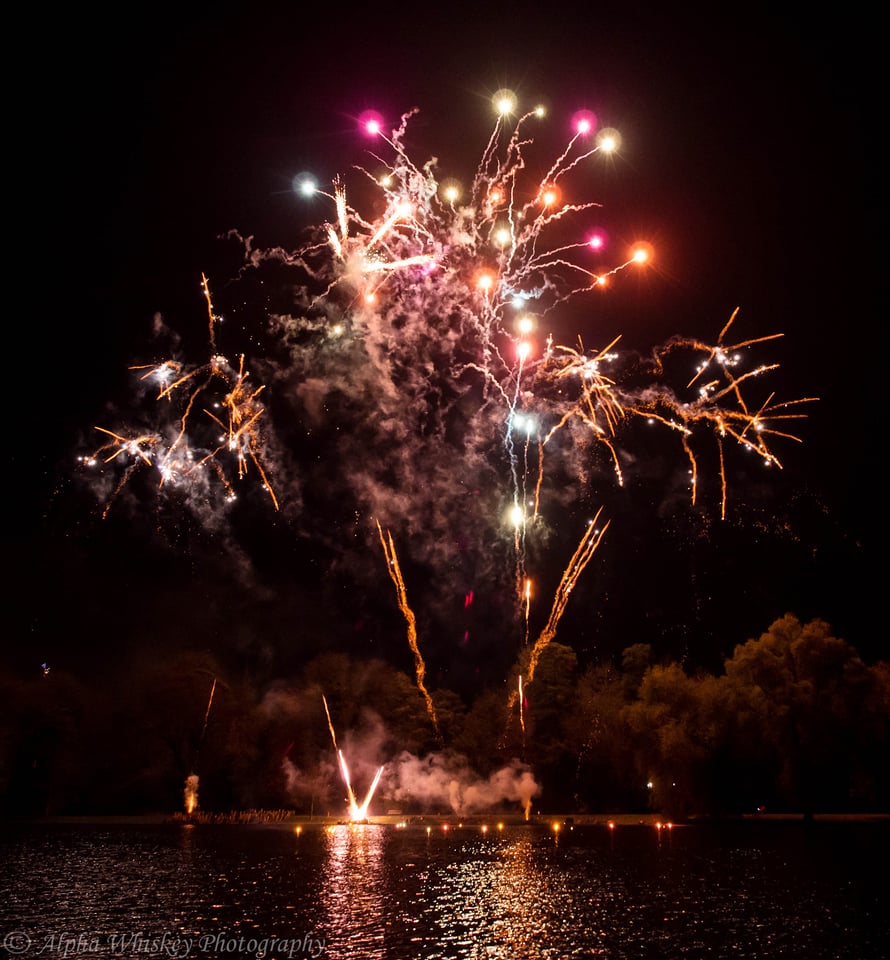
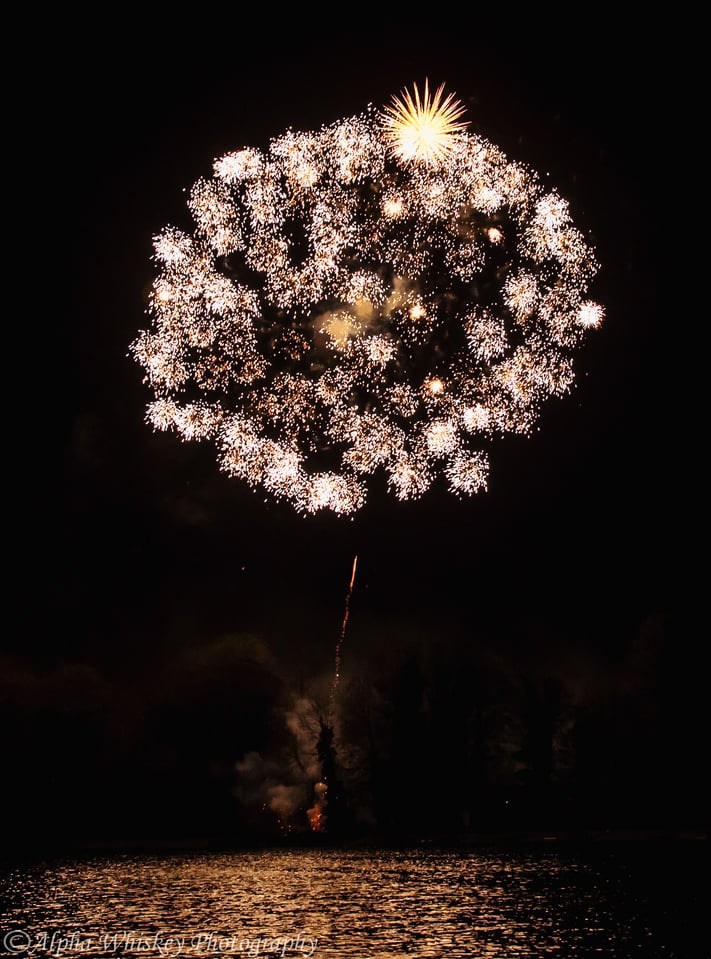
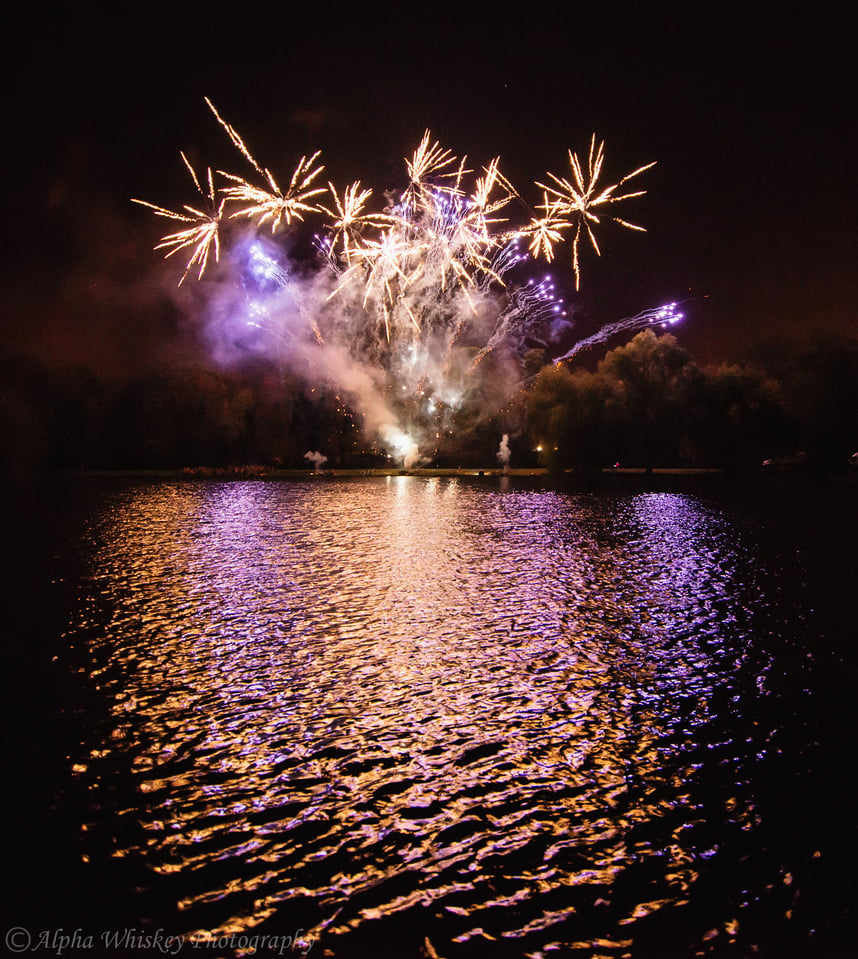
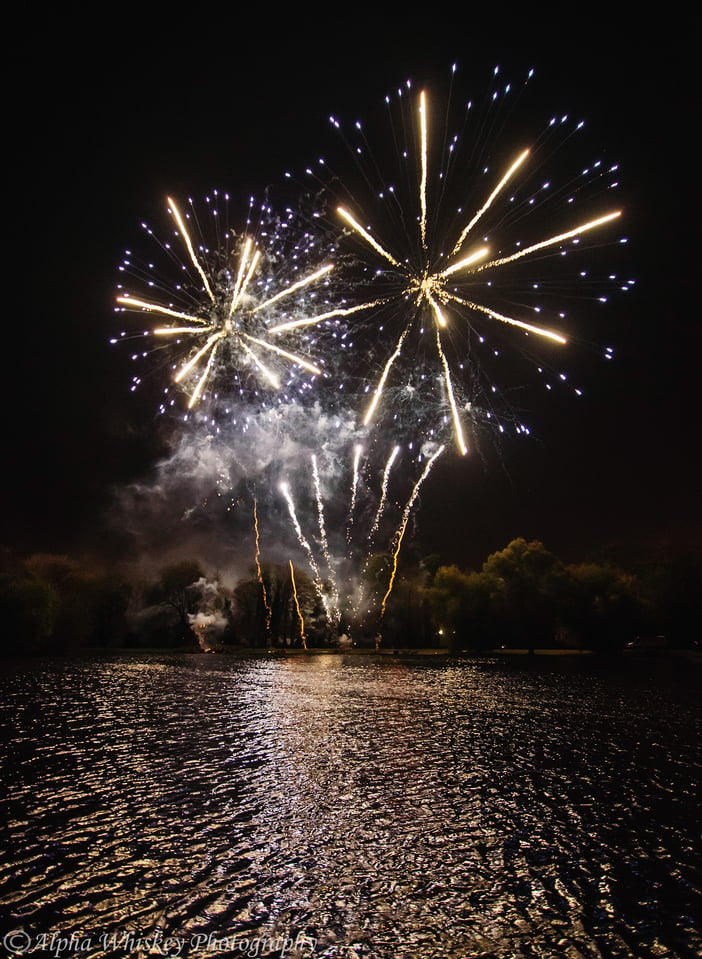
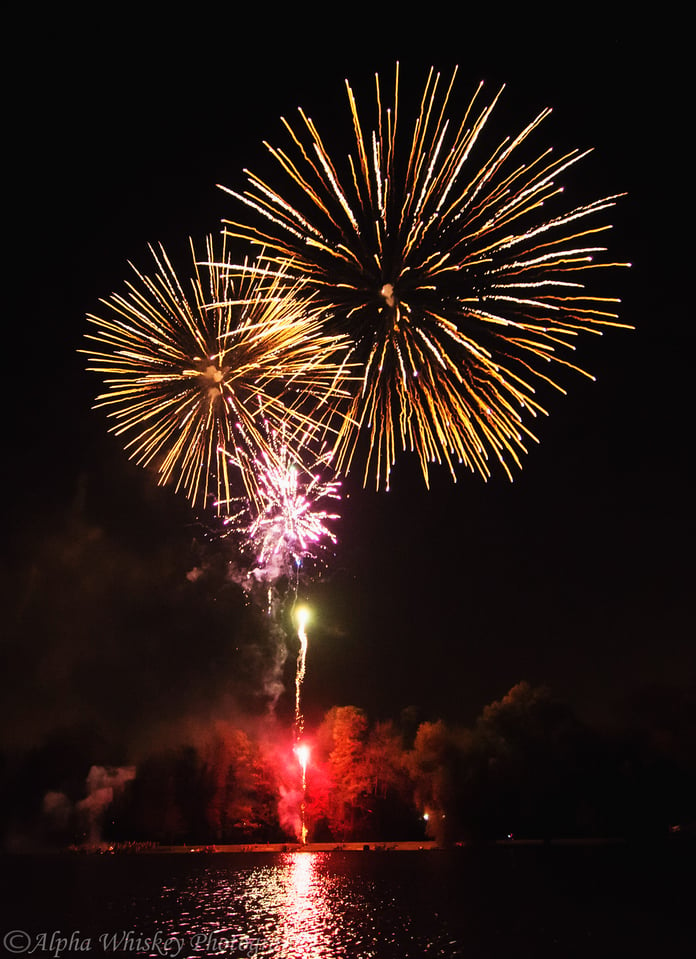



Wonderful photos Sharif.
Hi Sharif,
What a great selection of photos. They are really colorful and vivid. Quite a display they put on.
I have previously taken photos of fireworks but find that once the show begins the sky very quickly fills up with smoke and getting any clear shots is nearly impossible. Did your faster shutter speed help in this regard or was the wind blowing away from you?
Many thanks and an interesting article.
Thank you Bernard. The fireworks were on the other side of the lake, so while the smoke was present, it was far enough away not to pose a problem. It may even have added to the atmosphere of the shots. I don’t recall there being any wind, and I do think having a faster shutter speed helped capture the bursts before the smoke overwhelmed them.
Regards,
Sharif.
Hey Sharif,
Great article and exactly what I beleive should be done more often. Yes you can use the cookie cutter workflow to photograph fireworks (tripod, longer exposure, etc.) but you demonstrated there is other options. Once you understand the thinking behind the picture, I beleive they make sense.
Thanks Simon, I appreciate that :)
Nice work. You have now got me wondering what your best firework shots look like ??
The link is in that part of the text. alphawhiskey.slickpic.com/album…?wallpaper
Sharif,
Very nice photos and enjoyable article. I’ve read Nasim’s article on shooting fireworks, and it is nice read/see a different perspective and approach to the same subject. It is not always practical to bring and set up a tripod as I have found, so shooting handheld, even braced against a tree or car or anything solid, still demands a faster shutter speed.
Instead of shooting at a low ISO, long exposure (3+ seconds), aperture f8 or higher, it is good to see that one can obtain quite decent shots with a wide open lens and faster shutter speed.
I noticed your best fireworks photos were actually shot with a D90 at a lower ISO and faster shutter speed than the photos in this article.
Thank you Stephen. :)
Yes the New Year fireworks in that link were more vivid, allowing for a lower ISO and slightly faster shutter speed.
Nice work there…. very light an enjoyable reading, with nice shots.
I personally very much prefer to shoot fireworks with tripod via long exposure. However, this is a great article, just in case i’m caught in fireworks display with camera but no tripod.
Thank you for sharing.
A.Monoang
Thank you.
Excellent images, Sharif, especially as its another method to shoot fireworks! Most other articles talk about longer exposures which makes nice images, but they’re not what you see. Your images capture what we see at a firework show. Great article as always.
P.s. I read that article, and for some reason all I heard was the voice of one of our old teachers… I’m sure you know the one I mean!
Regards,
Daniel
Thanks Daniel. :)
Such fun shots it makes you wish more people would try and blow up Parliament :) But what’s with the level horizons? Did you take that horizon stuff Nasim said seriously? Joking aside, I like how the trees look like billowing smoke.
Regards,
Verm
Very good advice Sharif, thank you. Some excellent shots … and also, some very good advice about not missing the moment! How many times as photgraphers have we had our eyes so glued to the viewfinder to capture “the shot”, only to miss the feeling of being part of the special occasion.
Thank you Vaughan :)
And yes, I’ve been as guilty as anyone in the past of relinquishing the moment to the viewfinder. While you may have photo evidence of the event, your memory invariably doesn’t:) So, yes, important to enjoy the moment for yourself too :)
Lovely photos! I know the E-M5 isn’t quite as good in low light as larger DSLRs, but my favourite firework photos all came from my venerable Oly E420 – I’m quite looking forward to bonfire night this year and seeing what my new Panasonic G6 can do!
Thank you and good luck! :)